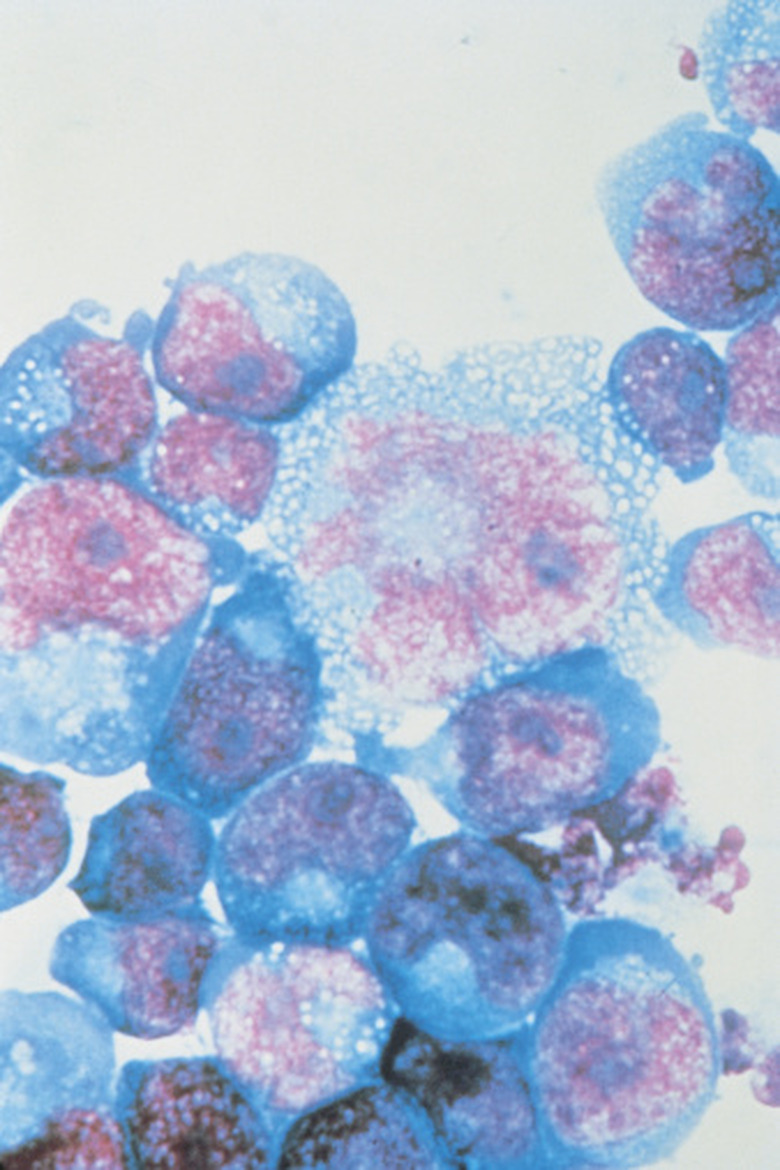What Type Of Molecule Prevents Extensive Changes In The pH Of Living Organisms?
Cells in living organisms need to maintain the correct pH, or acid-base balance, to function properly. The right pH is achieved by means of the phosphate buffering system. It consists of dihydrogen phosphate and hydrogen phosphate ions in equilibrium with each other. This buffering system resists changes in pH, because the concentrations of the dihydrogen phosphate and hydrogen phophate ions in the cell are large compared to the concentrations of acidic or basic ions produced in the cell.
What is pH?
What is pH?
The pH of a solution measures the concentration of hydrogen ions, or H+. Hydrogen ions are single positively charged entities, also called protons. The more hydrogen ions there are in a water-based solution, the more acidic the solution becomes. The pH scale measures the log of H+ ion concentrations, so that a greater H+ concentration will give a lower number. The log scale runs from 0 to14. A pH below 7 is considered acidic and a pH above 7 is alkaline. A pH of 7 is defined as neutral because the number of acidic hydrogen ions, or H+, and basic hydroxyl ions, or OH-, in a solution are equal.
How Buffers Work
How Buffers Work
A buffering system consists of a weak acid and its corresponding weak base. An acid is defined as a molecule that releases hydrogen ions in water and a base is a molecule that accepts hydrogen ions. A weak acid or weak base ionizes, or gives up hydrogen or hydroxyl ions, only slightly in water, while strong acids and bases ionize almost completely. When excess hydrogen ions are in the buffer solution, the weak base gobbles up the hydrogen ions and changes into its corresponding acid while preserving the pH of the solution. When a base is added, the reaction reverses and the weak acid gives up some of its hydrogen ions to make the solution more acidic and changes into a weak base.
The Phosphate Buffer System
The Phosphate Buffer System
The phosphate buffer system maintains the intracellular pH in all living organisms. In this buffer system, dihydrogen phosphate ions serve as the weak acid. Hydrogen phosphate ions represent the weak base. In water or in intracellular fluid, dihydrogen phosphate and hydrogen phosphate are always in equilibrium with each other. The extent of ionization of the dihydrogen phosphate-hydrogen phosphate system is represented by the dissociation constant, or pKa, value, which is expressed as a log value. The phosphate buffering system is well-suited for living cells because the pKa is 7.21, which is very close to the physiological pH.
When the Phosphate Buffer System is Insufficient
When the Phosphate Buffer System is Insufficient
In higher organisms with a circulatory system, the phosphate buffer system cannot maintain the proper pH in blood because the dihydrogen phosphate and hydrogen phosphate ion concentrations are not high enough. The bicarbonate buffer system is able to maintain the blood at a pH of about 7.4. Here, bicarbonate is the weak acid and hydrogen carbonate ion is the weak base. Bicarbonate and hydrogen carbonate are formed from dissolved carbon dioxide in blood. Excess carbon dioxide is expelled via the lungs.
References
- Harper College: The Carbomic Acid/Bicarbonate Buffer
- "Life: The Science of Biology"; W.K. Purves, et al.; 2001
Cite This Article
MLA
Blue, Marie-Luise. "What Type Of Molecule Prevents Extensive Changes In The pH Of Living Organisms?" sciencing.com, https://www.sciencing.com/type-changes-ph-living-organisms-8647730/. 24 April 2017.
APA
Blue, Marie-Luise. (2017, April 24). What Type Of Molecule Prevents Extensive Changes In The pH Of Living Organisms?. sciencing.com. Retrieved from https://www.sciencing.com/type-changes-ph-living-organisms-8647730/
Chicago
Blue, Marie-Luise. What Type Of Molecule Prevents Extensive Changes In The pH Of Living Organisms? last modified March 24, 2022. https://www.sciencing.com/type-changes-ph-living-organisms-8647730/
